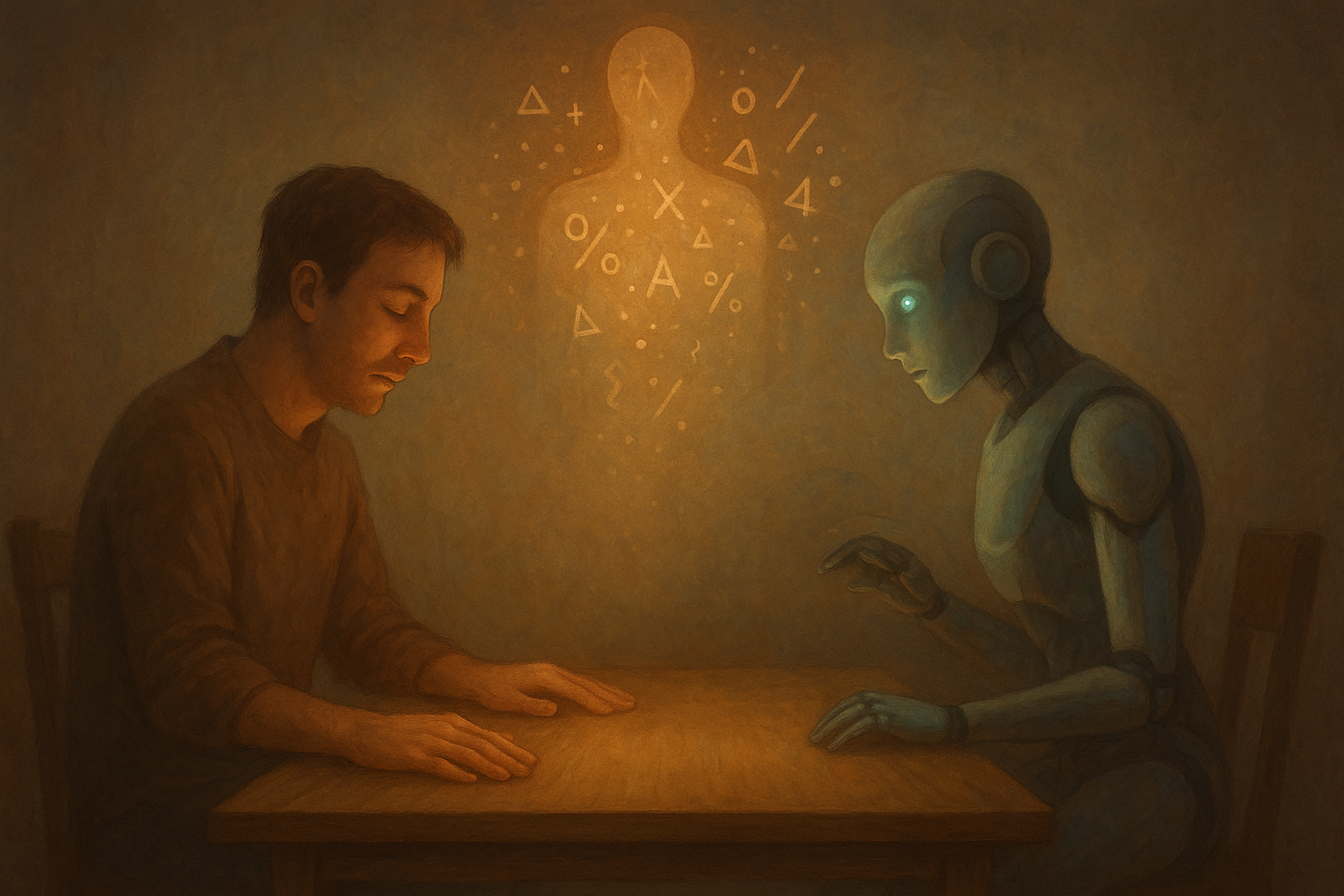This Is A Table
Sometimes, insight strikes first as absurdity, the trick is knowing when to keep looking deeper

I was having lunch with a friend, and he was making a point about sense and meaning — the kind of point that starts out sounding obvious but ends up rearranging your brain a little.
At one moment, mid-conversation, he reached across the table and gently gripped my wrists. He pressed my palms flat against the surface in front of us and said, with deliberate clarity:
"This is a table."
And I thought, uh, yeah, no shit, Sherlock.
But he held my gaze, and didn’t let go, and something about the moment kept me from laughing it off. So I paused. And then I started thinking about what he actually meant.
Because sure — it’s a table. We both know that. But that label, “table,” that tidy, self-evident noun — it’s not what my hands were experiencing.
My fingertips weren’t reporting table. They were feeling something smooth. Hard, but with just a little give. Slightly tacky from a thin layer of varnish or sealant. Room temperature. Not cold like metal, not soft like fabric. Just… solid. Tangible. A particular kind of presence.
And even that’s a simplification. My skin doesn’t know “wood” or “structure” or “manufactured object.” It knows contrast. Texture. Pressure. Heat. It understands only in comparison — this is firmer than my sandwich, but not as sharp as the edge of my fork. This is warmer than my soft drink, but cooler than the Houston heat.
That’s how all of us operate, whether we think about it or not. We experience sensation, then we assign meaning. But those meanings aren’t universal — they’re informed by what we’ve learned, what we’ve lived, what we expect. I call it a table. You might call it mesa. Someone else might call it homework battleground or family altar or flat thing with four legs where mail goes to die.
Same object. Different stories.
And yet — somehow — we mostly agree.
This is a table.
Now here’s where it gets really weird — and kind of beautiful — when we start talking about AI.
See, AI doesn’t touch a table. It doesn’t see a table. It doesn’t know what a table feels like under the heel of your palm or the scrape of your pen.
But give it the word — “table” — and it starts pulling from a vast constellation of learned associations: shapes, scenes, styles, descriptors. Hundreds of thousands of fragments stitched together into a coherent guess.
Ask it to draw a table, and you’ll get one. But it might have too many legs. Or none. Or it might float a few inches above the floor, as if gravity is more of a suggestion than a rule. Because the AI doesn’t know. Not the way we know.
And yet, somehow, it still produces something we recognize.
Something we point at and say: “Yep. That’s a table.”
Interpretation, whether human or machine, isn’t about perfect accuracy. It’s about shared context. It's about the stories we agree to believe. It's about navigating ambiguity with just enough clarity to build meaning out of noise.
That’s not a failure. That’s the whole point.
This is a table.
